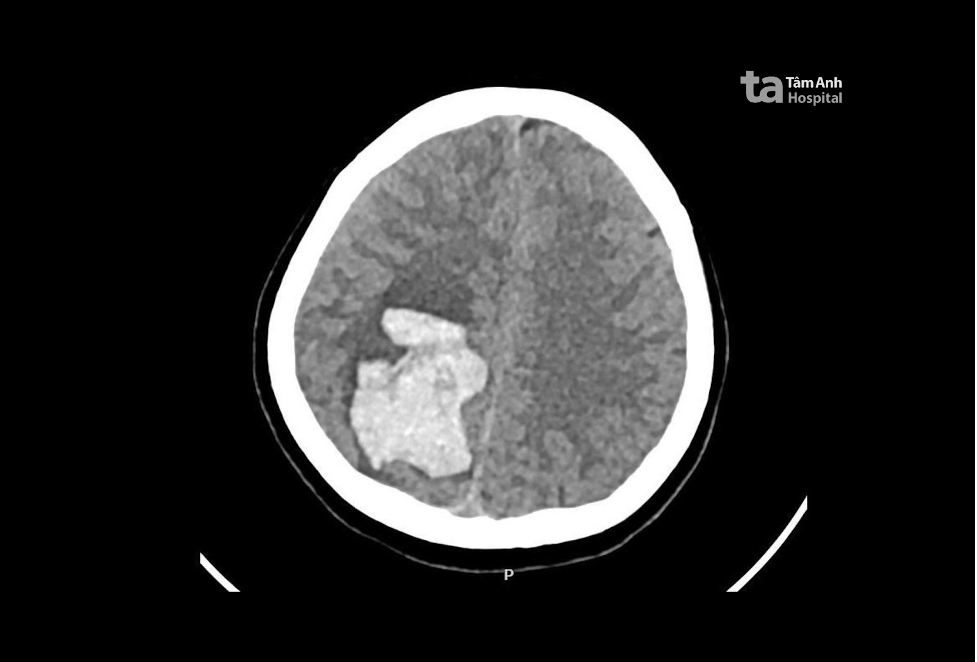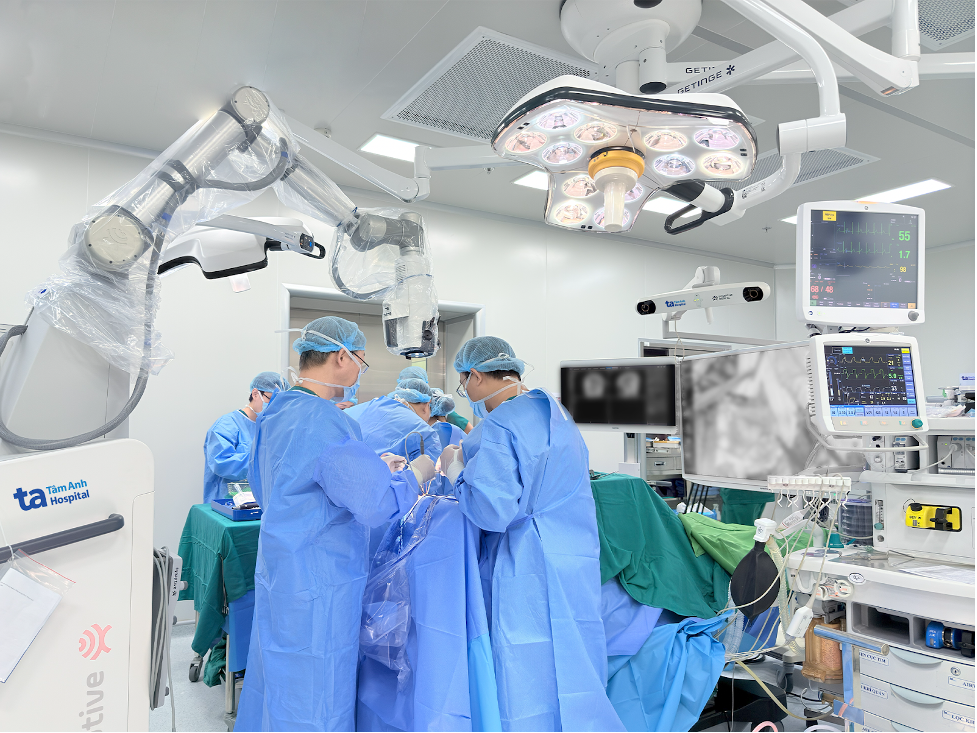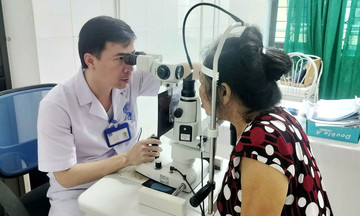Quyen had been receiving preventative treatment for preeclampsia since her 12th week of pregnancy. Almost two months later, she experienced a sudden onset of headaches and nausea, followed by a collapse, left-sided paralysis, and a semi-conscious state. On 24/7, Doctor Duong Pham Van Thanh from the Emergency Department of Tam Anh General Hospital in Ho Chi Minh City reported that upon arrival, the fetal heartbeat was stable at 140 beats per minute, but Quyen's Glasgow Coma Scale (GCS) score was 11/15, a sign of severe central nervous system damage.
The hospital activated its "Code Stroke" emergency protocol, prioritizing immediate treatment. Imaging scans revealed a 5x4x6 cm intracranial hemorrhage in the right hemisphere of Quyen's brain, specifically in the right occipital parenchyma. The blood clot was exerting significant pressure and displacing the midline of the brain, indicating critically high intracranial pressure.
"This was an extremely urgent situation, threatening the lives of both the mother and the unborn child," Dr. Thanh said. Neurosurgeons, intensive care specialists, anesthesiologists, and obstetricians consulted to assess the risks and agreed on emergency stroke surgery using an AI-integrated robot. This ensured the "golden hour" was utilized effectively, aiming to save both mother and child.
Before the operation, the Modus V Synaptive robot used an AI algorithm to create a 3D map of Quyen's brain, allowing doctors to clearly identify the boundaries of the blood clot and the surrounding healthy tissue. This enabled them to plan the optimal surgical approach, minimizing damage to the areas of the brain responsible for motor function and vision, particularly crucial for a pregnant patient.
 |
CT scan of Quyen's brain reveals a large hemorrhage. Photo: Tam Anh General Hospital |
CT scan of Quyen's brain reveals a large hemorrhage. Photo: Tam Anh General Hospital
Doctor Chu Tan Si, Head of Neurosurgery at the Neuroscience Center of Tam Anh General Hospital in Ho Chi Minh City, explained that brain surgery on pregnant women is highly complex. Blood pressure must be carefully controlled, the fetus must be protected, and the mother's brain must be kept as safe as possible. The surgical team meticulously adjusted Quyen's position to avoid compression of the inferior vena cava, ensuring blood flow to the fetus throughout the procedure. Anesthesia, anticonvulsants, and intracranial pressure-reducing medications were carefully selected to minimize uterine contractions, placental ischemia, or fetal distress during surgery.
After nearly 90 minutes, the blood clot was completely removed, relieving pressure on the brain tissue and significantly reducing intracranial pressure. Two days post-surgery, Quyen regained consciousness, her GCS score improved significantly, she could move her left arm slightly, and the fetal heartbeat remained stable. A 1975-slice CT scan confirmed the effective decompression of the brain and the absence of new blood clots. By the 5th day, Quyen had recovered well, was fully conscious, had 4/5 strength in her left arm and 2/5 in her left leg, and showed signs of regaining mobility.
Quyen continues her rehabilitation to regain full health. Doctors report a regular fetal heartbeat, with all fetal development indicators closely monitored and currently growing within normal limits.
 |
Dr. Si and the surgical team remove the hemorrhage using the AI-powered robot. Photo: Tam Anh General Hospital |
Dr. Si and the surgical team remove the hemorrhage using the AI-powered robot. Photo: Tam Anh General Hospital
Intracranial hemorrhage is a rare but serious complication during pregnancy, potentially fatal to both mother and child if not treated promptly. The risk is highest during the third trimester, with common causes including brain aneurysms, arteriovenous malformations, or pregnancy-related physiological disorders. Preeclampsia is a leading cause.
Preeclampsia increases vascular resistance throughout the body, leading to high blood pressure, reduced cardiac output, and plasma volume. These changes can disrupt blood flow to the brain, potentially causing cerebral edema and hemorrhage.
Doctor Nguyen Thi Quy Khoa, Deputy Head of Obstetrics at the Obstetrics and Gynecology Center of Tam Anh General Hospital, advises pregnant women, especially those with risk factors like preeclampsia, high blood pressure, obesity, diabetes, blood clotting disorders, or a family history of stroke, to undergo regular checkups at medical facilities with both obstetrics and neurology departments to manage these risks. Warning signs such as severe, persistent headaches, visual disturbances (blurred or double vision), difficulty speaking, transient loss of consciousness, vomiting, seizures, or paralysis warrant immediate attention at a hospital equipped for specialized stroke care.
Phuong Pham - Minh Huong
*The patient's name has been changed.
| Readers can submit questions about neurological conditions here for doctors to answer. |












